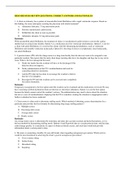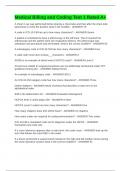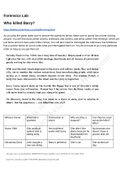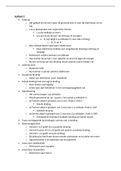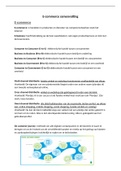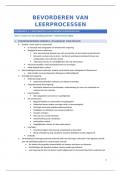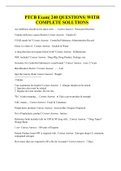Noise Trader Risk in Financial Markets. Authors: J. Bradford De Long, Andrei Schleifer, Lawence
H. Summers, Robert J. Waldmann. Source: The Journal of Political Economy, Vol. 98, No. 4 (Aug.,
1990), pp. 703-738
Research question(s):
1. How do noise traders affect financial markets?
2. Does the presence of noise traders limit rational arbitrage?
Underlying intuition
Conventionally, irrational investors that trade with wrong ideas about the fundamentals of an
asset are assumed to be driven out by rational arbitrageurs (Friedman, Fama). De Long, Schleifer,
Summers and Waldmann (DSSW) (the authors) claim that the unpredictability of these wrong
ideas by such irrational investors (noise traders) cause a risk in asset’s prices which renders
these assets less attractive for rational arbitrageurs. Arbitrageurs face liquidity constraints as
they are bound by short investment horizons and thus can’t outlast noise traders in the long-run.
This paper proposes a theoretical model based upon which the authors try to explain the role of
noise traders in the financial market.
Research Methodology (model)
The proposed model assumes the existence of two groups of traders: sophisticated traders
(fraction 1-μ) with rational beliefs and noise traders (fraction μ) with irrational beliefs
(misconceptions about fundamentals). The model assumes a generational model with two
stages where traders invest in a portfolio when they are young, and sell when they are old.
Furthermore two assets are defined, the safe asset s and the unsafe asset u. Both assets have
the same expected payoff r, but fundamental beliefs for asset u are different for the two groups
of investors. Noise traders have a price misconception defined as 𝜌" ~ 𝑁(𝜌 ∗ , 𝜎*+ ). Each agent has
utility function 𝑈 = −𝑒 1(+2)3 , where 𝑤 defines agent’s expected final wealth and 𝛾 is the
agent’s risk-aversion.
Demand for the asset differs between the two types of agents, as their expectations of prices
differ. The expected price of sophisticated traders is " 𝑝"78 , the expected price of noise traders
is " 𝑝"78 + 𝜌" . Hence their expected wealth, and consequently their expected utility differs.
Optimal demands therefore aren’t equal as well: for sophisticated traders we have 𝜆;" =
<7 = >=?@ 1>= (87<) <7 = >=?@ 1>= (87 ) *=
, for noise traders we have 𝜆D" = + . Some rewriting,
+2( = ABC=?@ ) +2( = ABC=?@ ) +2( = ABC=?@ )
E C AFC E(*= 1 *∗ ) E*∗ (+2)E C AFC
using 𝜎>+=?@ = , results in the following price: 𝑝" = 1 + + − .
(87<)C 87< < <(87<)C
This price relation can be used to find the difference in the returns of the sophisticated and the
noise traders: 𝛥𝑅D1; = (𝜆D" − 𝜆;" ) [𝑟 + " 𝑝"78 − 𝑝" (1 + 𝑟)]. The difference in expectation now
(87<)C (*∗ )C 7(87<)C AFC
becomes 𝐸(𝛥𝑅D1; ) = 𝜌 ∗ − .
(+2)EAFC
Results
E(*= 1 *∗ ) E*∗ (+2)E C AFC
Looking at the derived price 𝑝" = 1 + + − , there are three terms that
87< < <(87<)C
display the effect of noise traders on asset u. The second term describes the price deviation
H. Summers, Robert J. Waldmann. Source: The Journal of Political Economy, Vol. 98, No. 4 (Aug.,
1990), pp. 703-738
Research question(s):
1. How do noise traders affect financial markets?
2. Does the presence of noise traders limit rational arbitrage?
Underlying intuition
Conventionally, irrational investors that trade with wrong ideas about the fundamentals of an
asset are assumed to be driven out by rational arbitrageurs (Friedman, Fama). De Long, Schleifer,
Summers and Waldmann (DSSW) (the authors) claim that the unpredictability of these wrong
ideas by such irrational investors (noise traders) cause a risk in asset’s prices which renders
these assets less attractive for rational arbitrageurs. Arbitrageurs face liquidity constraints as
they are bound by short investment horizons and thus can’t outlast noise traders in the long-run.
This paper proposes a theoretical model based upon which the authors try to explain the role of
noise traders in the financial market.
Research Methodology (model)
The proposed model assumes the existence of two groups of traders: sophisticated traders
(fraction 1-μ) with rational beliefs and noise traders (fraction μ) with irrational beliefs
(misconceptions about fundamentals). The model assumes a generational model with two
stages where traders invest in a portfolio when they are young, and sell when they are old.
Furthermore two assets are defined, the safe asset s and the unsafe asset u. Both assets have
the same expected payoff r, but fundamental beliefs for asset u are different for the two groups
of investors. Noise traders have a price misconception defined as 𝜌" ~ 𝑁(𝜌 ∗ , 𝜎*+ ). Each agent has
utility function 𝑈 = −𝑒 1(+2)3 , where 𝑤 defines agent’s expected final wealth and 𝛾 is the
agent’s risk-aversion.
Demand for the asset differs between the two types of agents, as their expectations of prices
differ. The expected price of sophisticated traders is " 𝑝"78 , the expected price of noise traders
is " 𝑝"78 + 𝜌" . Hence their expected wealth, and consequently their expected utility differs.
Optimal demands therefore aren’t equal as well: for sophisticated traders we have 𝜆;" =
<7 = >=?@ 1>= (87<) <7 = >=?@ 1>= (87 ) *=
, for noise traders we have 𝜆D" = + . Some rewriting,
+2( = ABC=?@ ) +2( = ABC=?@ ) +2( = ABC=?@ )
E C AFC E(*= 1 *∗ ) E*∗ (+2)E C AFC
using 𝜎>+=?@ = , results in the following price: 𝑝" = 1 + + − .
(87<)C 87< < <(87<)C
This price relation can be used to find the difference in the returns of the sophisticated and the
noise traders: 𝛥𝑅D1; = (𝜆D" − 𝜆;" ) [𝑟 + " 𝑝"78 − 𝑝" (1 + 𝑟)]. The difference in expectation now
(87<)C (*∗ )C 7(87<)C AFC
becomes 𝐸(𝛥𝑅D1; ) = 𝜌 ∗ − .
(+2)EAFC
Results
E(*= 1 *∗ ) E*∗ (+2)E C AFC
Looking at the derived price 𝑝" = 1 + + − , there are three terms that
87< < <(87<)C
display the effect of noise traders on asset u. The second term describes the price deviation


